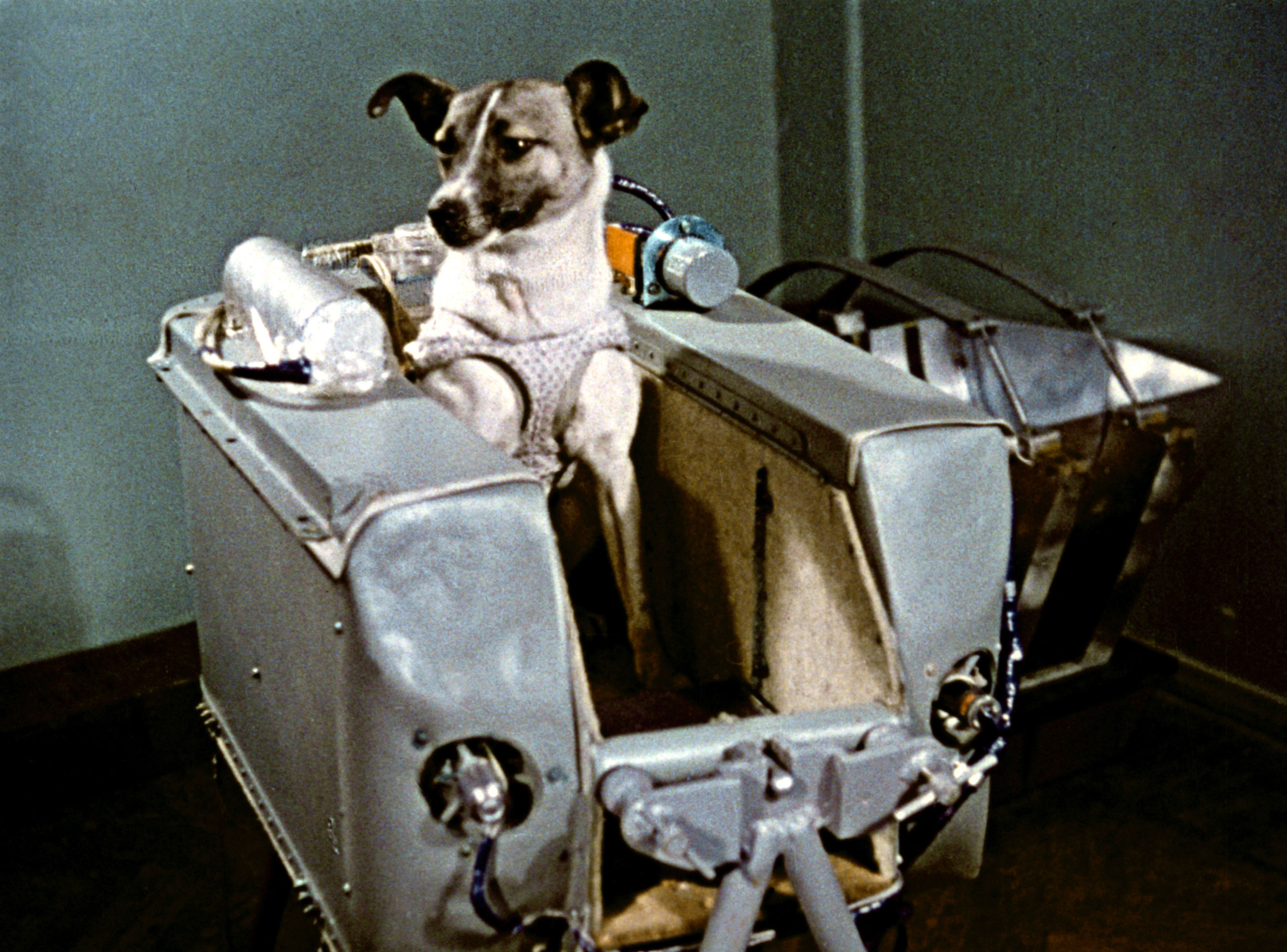Laika << LY kuh >> , a mixed-breed dog , became the first animal to orbit Earth. The Soviet Union launched Laika into orbit aboard the spacecraft Sputnik 2. Laika died in space, but she is remembered as a pioneer of space exploration .

Sputnik 2 was the first space mission to observe the effects of orbit on a living creature. In preparation for the mission, Soviet officials captured several stray dogs. Laika was a stray living in the streets of Moscow , Russia . Laika was originally given the name Kudryavka (Little Curly). But the dog became famous as Laika, the Russian name for a type of hunting dog. She was about three years old when she was captured, shortly before the launch.
Laika and the other dogs were trained to live in small, pressurized capsules. They were also trained to endure loud noises. Scientists surgically implanted devices in Laika to monitor conditions inside her body, including blood pressure, heart rate, and breathing rate.
Sputnik 2 was launched on Nov. 3, 1957, with Laika inside. She reached orbit above Earth alive. There was no plan to recover the spacecraft from orbit, so it was known that Laika would die in space. Soviet scientists hoped that Laika could survive for a week. Soviet officials claimed at the time that Laika survived for four days. However, it was later announced that Laika only survived a few hours in orbit, due to increased temperatures inside the capsule. Sputnik 2 burned up in Earth’s atmosphere months later, on April 14, 1958.
Laika’s journey proved that living creatures could survive in microgravity, the condition of weightlessness experienced in orbit. Her mission helped lead the way for two other Soviet dogs, Belka and Strelka, to orbit and successfully return to Earth in 1960. The success of this later launch encouraged human missions to orbit the planet. A statue honoring Laika was unveiled in Moscow in 2015.
